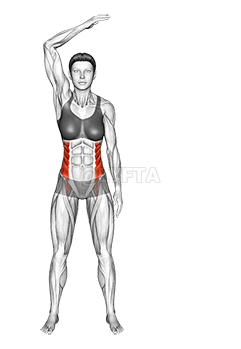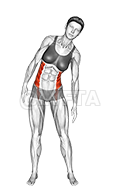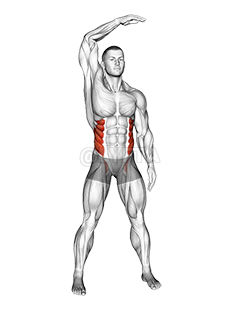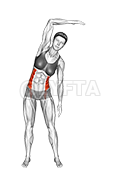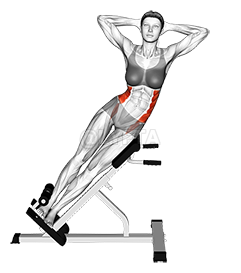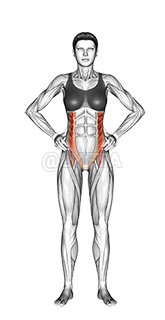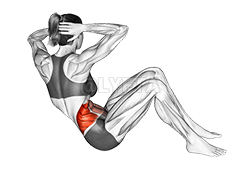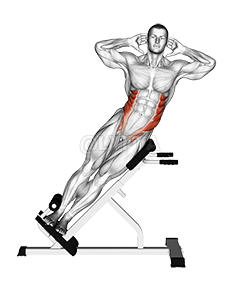
Standing Side Bend
Exercise Profile
Related Exercises:
Introduction to the Standing Side Bend
The Standing Side Bend is a simple yet effective exercise that primarily targets the obliques and also helps to improve flexibility and posture. It is suitable for individuals of all fitness levels, from beginners to advanced, as it can be easily modified to match one's ability. People may want to incorporate this exercise into their routine to strengthen their core, enhance balance, and promote a leaner waistline.
Performing the: A Step-by-Step Tutorial Standing Side Bend
- Raise one arm straight above your head, keeping your palm facing inward towards your head.
- Bend your body to the opposite side of the raised arm, stretching your side muscles while keeping your hips and legs stationary.
- Hold the position for a few seconds, then slowly return to the upright position.
- Repeat the process with the other arm and alternate sides for several repetitions.
Tips for Performing Standing Side Bend
- Controlled Movement: Slowly bend to one side, keeping your movements controlled and smooth. Avoid jerking or fast movements which can strain your muscles. Your body should only move in a lateral direction, not forward or backward.
- Keep Arms Straight: Extend your arms overhead, keeping them straight and close to your ears as you bend. A common mistake is to let the arms fall forward or backward, which can throw off your balance and reduce the effectiveness of the bend.
- Engage Your Core: Keep your abdominal muscles engaged throughout the exercise. This will help stabilize your body and increase the workout's effectiveness. Some people forget to do this and only focus on the side bending motion.
- Don't Overextend: While you want
Standing Side Bend FAQs
Can beginners do the Standing Side Bend?
Yes, beginners can do the Standing Side Bend exercise. It's a simple exercise that focuses on the obliques and helps to improve flexibility and posture. However, like any exercise, it's important to start slowly and ensure proper form to prevent injury. It might be beneficial for beginners to do this exercise in front of a mirror or under the supervision of a trainer to ensure they are doing it correctly.
What are common variations of the Standing Side Bend?
- The Half Moon Pose is another variation where you balance on one leg while bending to the side, extending the other leg and the opposite arm.
- The Revolved Side Angle Pose is a twist on the Standing Side Bend where you bend to the side and then twist your torso towards the sky.
- The Gate Pose is a kneeling variation of the Standing Side Bend, where you extend one leg out to the side and reach your opposite arm over your head, bending towards the extended leg.
- The Extended Side Angle Pose is a variation where you bend one knee and reach your opposite arm over your head, creating a stretch along the side of your body.
What are good complementing exercises for the Standing Side Bend?
- Extended Triangle Pose (Utthita Trikonasana): This pose also targets the side muscles of the body, similar to the Standing Side Bend, which can increase the flexibility and strength of these muscles, making the side bend more effective and easier to perform.
- Seated Forward Bend (Paschimottanasana): This exercise stretches the spine and the back of the body, which complements the Standing Side Bend by providing a counter-stretch to the side bending movement, helping to maintain balance in the body's flexibility and strength.
Related keywords for Standing Side Bend
- Bodyweight exercise for waist
- Side bend workout
- Waist toning exercises
- Bodyweight side bend
- Standing waist workout
- Fitness routine for waist
- Side bending for body toning
- Waist-targeted bodyweight exercise
- Standing side bend for waist
- Bodyweight exercise for side bending
